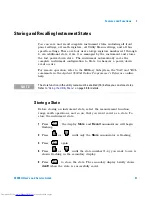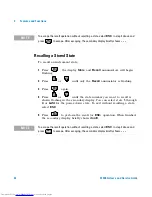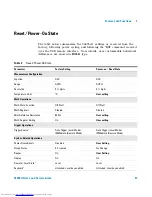
Features and Functions
2
34405A User’s and Service Guide
29
Null
When making null measurements, also called relative, each reading is the
difference between a stored null value and the input signal. For example,
this feature can be used to make more accurate resistance measurements
by nulling the test lead resistance.
After you enable the Null operation, the multimeter stores the next
reading into the Offset register and immediately displays on the primary
display:
Primary Display = Reading - Offset
You can view and edit the Offset value in the secondary display as
described in
“Editing Values in the Secondary Display”
on page 40.
The multimeter allows Null settings for the following measurement
functions: DC Volts, AC Volts, DC Current, AC Current, Resistance,
Frequency, Capacitance and Temperature.
dBm
The logarithmic dBm (decibels relative to one milliwatt) scale is often
used in RF signal measurements. The multimeter’s dBm operation takes a
measurement and calculates the power delivered to a reference resistance
(typically 50, 75 or 600
W
). The formula used for conversion from the
voltage reading is:
dBm
= 10 x Log
10
[ (Reading
2
/ R
REF
)
/ 0.001W ]
You can choose from several reference resistance values:
R
REF
= 2
Ω
, 4
Ω
, 8
Ω
, 16
Ω
, 50
Ω
, 75
Ω
, 93
Ω
, 110
Ω
, 124
Ω
, 125
Ω
, 135
Ω
, 150
Ω
,
250
Ω
, 300
Ω
, 500
Ω
, 600
Ω
, 800
Ω
, 900
Ω
, 1000
Ω
, 1200
Ω
, or 8000
Ω
.
Numeric results are in the range of ± 120.000 dBm with 0.01 dBm
resolution shown, independent of the number of digits setting.
You can view and select the R
REF
value in the secondary display as
described in
“Editing Values in the Secondary Display”
on page 40.
Null
Null
Shift
dBm
MnMx
Downloaded from
www.Manualslib.com
manuals search engine
















































